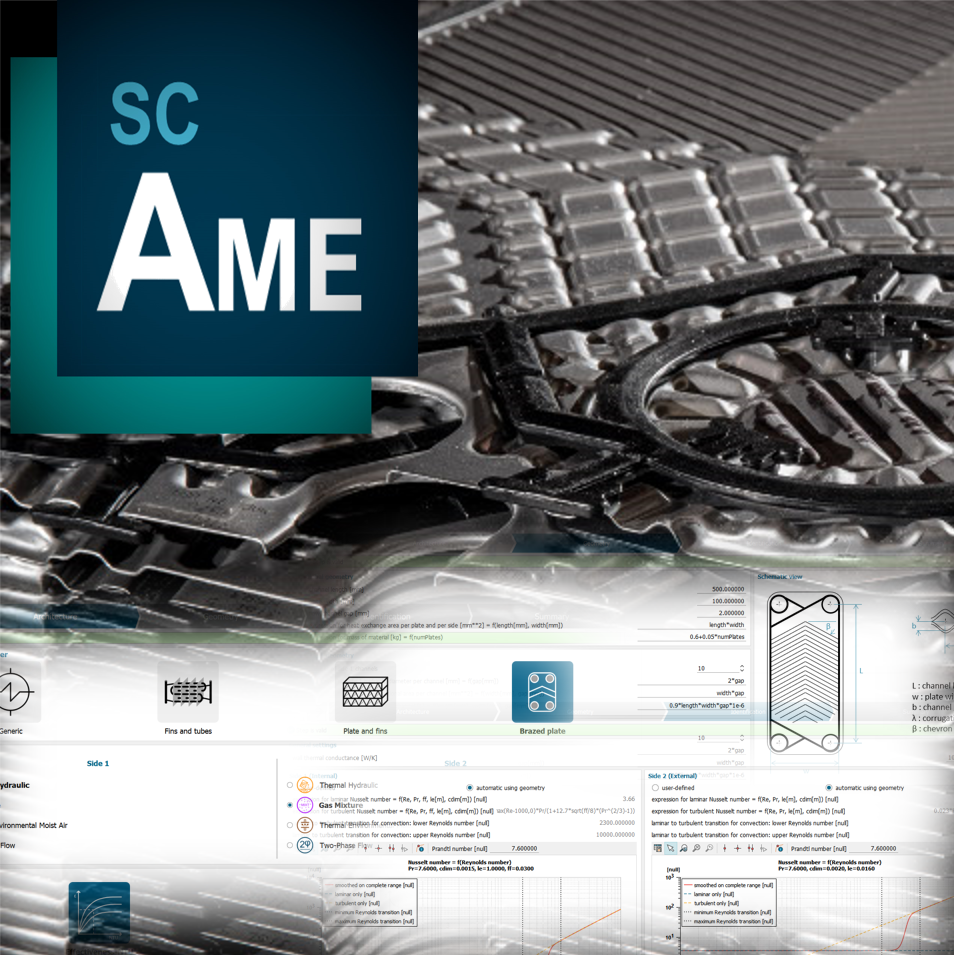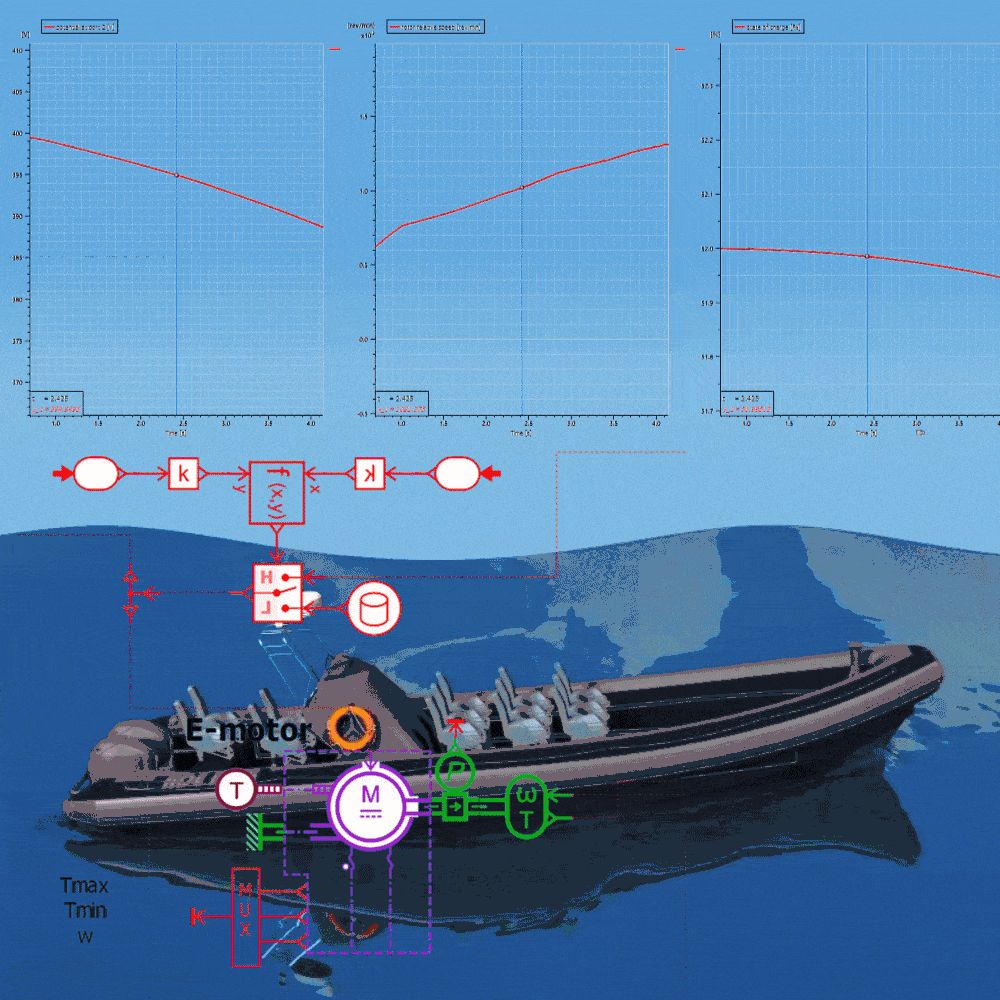In this latest blog article, we explore the critical role of heat exchanger design. By understanding the fundamentals of heat exchanger simulation and the challenges associated with it, engineers can develop effective solutions to improve heat transfer and minimize pressure drop while ensuring system operation within its intended temperature range.
To highlight the importance of proper design and verification, we delve into the simulation workflow part of the Heat Exchanger Assistant (HEX) inside Simcenter Amesim. More specifically, we investigate how heat exchanger models can be configured and what type of information is required to ensure satisfactory performance.

The Heat Exchanger Assistant can briefly be summarized as a built-in tool for creating different types of heat exchanger models commonly found in thermal systems. The intention with the tool is to have one single environment inside Simcenter Amesim to build, configure, and determine heat transfer characteristics. The tool is placed as a component in the library tree and can be found by searching for HEX. Once finished, the tool automatically generates the finalized component on the sketch area as a super-component for the user to later connect.
As seen in the upper part of the image above, the workflow follows four different steps: Architecture, Geometry, Identification, Summary.
The first step concerns global settings, such as choice of heat exchanger type and which fluids are involved. The selection you make here determineswhat library components are placed inside the finalized super-component. In the example above, this model would comprise of components from the Thermal Hydraulic and Gas Mixture libraries. After the fluid selection has been made for both sides, the heat transfer calculation method is established. For all selections, apart from the Two-Phase Flow library which uses a discretized calculation approach for evaporation/condensation, the effectiveness-NTU (Number of Thermal Units) method is selected. Below, an overview of the different heat exchanger types and their available options is provided.

The effectiveness-NTU method is a widely used technique for calculating the heat transfer rate in heat exchangers and enables us to form an expression for the thermal effectiveness of a given design. Once the thermal effectiveness (ε) and information about thermal resistances are determined for the design, it is possible to perform the full calculation of the heat exchanger’s thermal performance to obtain the actual amount of heat being transferred between the fluids.
Compared to other approaches, the effectiveness-NTU does not require outlet temperatures of the heat exchanger to be known beforehand, which is of course rare and usually involves some guess work. The approach also works best if the overall heat transfer coefficient is quite uniform, which is more likely in compact designs compared to larger industrial heat exchangers. In Simcenter Amesim special care has been taken to allow for use of the effectiveness-NTU method throughout transient simulation, although strictly speaking the method was originally developed for steady-state applications.
The effectiveness, [katex]epsilon[/katex], is the ratio between the actual heat transfer rate and the maximum possible heat transfer rate that can be transferred from one stream to the other. To aid us in this the dimensionless quantity Number of Thermal Units is used which describes the relationship between a heat exchanger’s overall heat transfer to that of the minimum heat capacity rate of its fluid streams.
[katex]epsilon=cfrac{q_{actual}}{q_{max}}[/katex]
where [katex]q_{actual}=C_{hot}(T_{h,1}−T_{h,2})=C_{cold}(T_{c,2}−T_{c,1})[/katex]
[katex]q=epsilon C_{hot}(T_{h,2}−T_{c,2})[/katex]
[katex]epsilon = fleft(NTU,cfrac{C_{min}}{C_{max}}right)[/katex]
where [katex]C[/katex] is heat capacity rate [W/K] given by [katex]c_p cfrac{dm}{dt}[/katex]
[katex]NTU=cfrac{UA}{C_{min}}[/katex]
where [katex]U[/katex] is the overall heat transfer coefficient in [W/m^2K] and [katex]A[/katex] the heat transfer area in [m^2].
The overall heat transfer coefficient (U), used in the expression of NTU, is in turn determined by establishing the contributions from convective and conductive heat transfer. How to do this is discussed further down this post when looking into the settings of the Identification tab.
Below an example is given for the effectiveness calculation of a counterflow heat exchanger using the NTU approach:
[katex]epsilon=cfrac{1-e^{-left(1-frac{C_{min}}{C_{max}}right)NTU}}{1-left(frac{C_{min}}{C_{max}}right)e^{-left(1-frac{C_{min}}{C_{max}}right)NTU}}[/katex]
In the workflow’s second stage, geometrical data is entered. An interactive 3D viewer provides a way to assess how a design changes as values are updated or as different configurations are set. Apart from quickly being able to ascertain what the final design will look like, the geometry tab performs rudimentary calculations on overall dimensions, fluid & solid volumes, and areas. This capability is currently only available for the Plate and Fin heat exchangers. Additionally, some values which might be more challenging to obtain are calculated from the geometry specifications, such as the fin length or fin hydraulic diameter. These can then be entered directly into the design if no other information is readily available.
Characterizing the heat exchanger’s heat transfer performance is done in the third step called Identification. To compute the overall heat transfer coefficient, U [W/m2K], the conductive and the two convective heat transfer terms need to be determined.

The identification step: The log-log plots show the Nusselt number as function of Reynolds number for laminar, transition, and turbulent flow. Note that Prandtl number, characteristic geometrical dimension (cdim)(e.g. hydraulic diameter), length (le), and friction factor (ff), are all constants in these plots.
Thermal conductance, Gwall, through the wall separating the two fluids is set using a single value with the unit [W/K]. Note that thermal conductance, which is a quantity that already implicitly accounts for the dimensions of the wall, is not the same as thermal conductivity [W/mK], which is an inherent property of a material itself. To calculate the thermal conductance from the conductivity the conductivity must first be multiplied by the area of the wall and then divided by its thickness (Gwall=kA/L). Using a fixed value for the thermal conductivity is an assumption, although a very convenient one. For metals, and within a reasonably narrow temperature range, the conductivity is approximately constant. For situations with a larger temperature range this might not be the case and may induce an error to the calculation.
For convective heat transfer, correlations based on the dimensionless Nusselt number are frequently used to estimate heat transfer coefficients. For more information about these correlations and dimensionless terms such as the Nusselt number, Nu, Reynolds number, Re, and Prandtl number, Pr, interested readers may visit Volupe’s CFD Handbook and peruse the Empirical correlations for convective heat transfer coefficients as well as the Dimensionless numbers.
Determining convective terms for each fluid side in the Identification step involves assigning correlations or constant values to the Nusselt numbers of laminar and turbulent flow. The transition region between laminar and turbulent flow is set using interval of Reynolds number.
For each fluid side, the user has two options:
- User-defined: settings can be manually modified or, if both sides use this option, Nusselt expressions can be calibrated from experimental data by using the NTU regression tool.
- Automatic using geometry: the proposed default settings are specifically adapted to the selected heat exchanger type. In some cases, the default Nusselt expressions depend on the existing heat exchanger geometry.
The NTU based regression routine performs a regression analysis on empirical heat transfer data supplied by the user to establish the relationship between the heat transfer coefficients and that of the actual heat transfer that took place. The routine may also be used if no geometrical data is known, however the results are significantly improved if details concerning the design are considered in the Geometry step.
To further aid the optimization process in determining the overall heat transfer coefficient, test conditions and fluid properties should be provided. Additional care should also be taken in ensuring that the correct units are used when entering the heat transfer data.
The optimization process will then attempt to set the values for the constants, coefficients, and exponents of the Nusselt correlations entered under the Identification step, as well as the thermal conductance through the wall. The user may freely choose which of the correlations to include or exclude from the optimization.
The workflow discussed here provides the possibility to model very detailed heat exchangers models performing with a high level of accuracy. However, if some parameter values are unknown at the time, e.g. geometric values or heat transfer characteristics, it is possible to use the default setting provided for a parameter as a good starting point for further simulation. Once more understanding is gained, it is possible to come back and improve upon the model if necessary. A configuration can both be exported and imported in the Heat Exchanger Assistant, and model settings can also be updated directly in the parameter mode of Simcenter Amesim.
We have now covered all necessary steps for creating a heat exchanger model using the Heat Exchanger Assistant. To proceed, we move on to the Summary tab to review settings and automatically generate the component on the sketch area.
We hope this blog article serves as a valuable resource for those working with thermal systems and who are looking into creating heat exchanger models in Simcenter Amesim.
Referencses:
[1] A Heat Transfer Textbook (5th edition), John H. Lienhard IV & John H. Lienhard V, 2020, USA (A Heat Transfer Textbook, 5th edition (mit.edu)) https://ahtt.mit.edu/
Author
Fabian Hasselby, M.sc.
+46733661021





